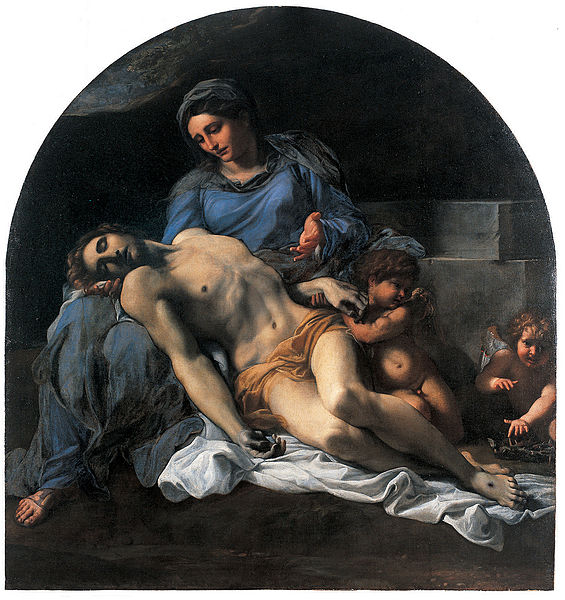
Title: Pietà
Artist: Annibale Carracci
Date Painted: c. 1600
Dimensions: 156cm x 149cm
Period: Baroque
Location: Museo di Capodimonte, Naples
Annibale Carracci, a key figure in the transition to Baroque art, did not have a work directly titled “Pieta” that is widely recognized or documented in the same manner as his other major religious compositions, such as “The Assumption of the Virgin” or “The Beaneater.” The “Pieta,” a theme depicting the Virgin Mary cradling the dead body of Jesus Christ after his crucifixion, has been a poignant subject in Christian art, famously rendered by artists such as Michelangelo and Caravaggio.
However, Annibale Carracci, along with his brother Agostino and cousin Ludovico, were instrumental in the development of the Baroque style in Italy, focusing on naturalism, emotion, and the dramatic use of light and shadow. Although Annibale Carracci himself might not have a well-known work specifically called “Pieta,” his approach to painting deeply influenced the way religious and emotional subjects were portrayed, emphasizing humanity and divine interaction in a way that would have impacted representations of the Pieta theme by later artists.
Carracci’s contribution to art was profound, including frescoes, altarpieces, and mythological subjects, characterized by their dynamic compositions, vivid realism, and emotional depth. If there’s a specific work or more details you had in mind regarding Carracci and the Pieta theme, it could be a lesser-known piece or attributed in a context not broadly documented in major art historical overviews. His influence on Baroque art and his role in reviving classical ideals, infused with a new sense of life and movement, marked a significant step forward in the evolution of European painting.